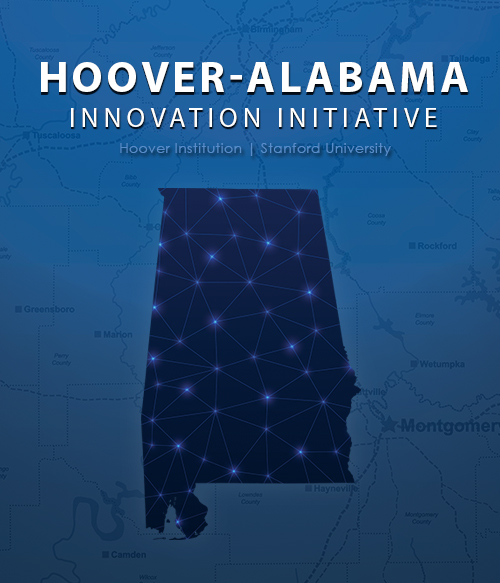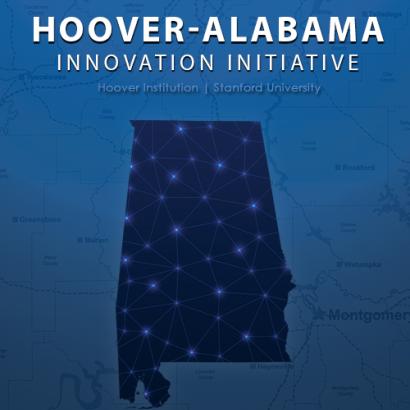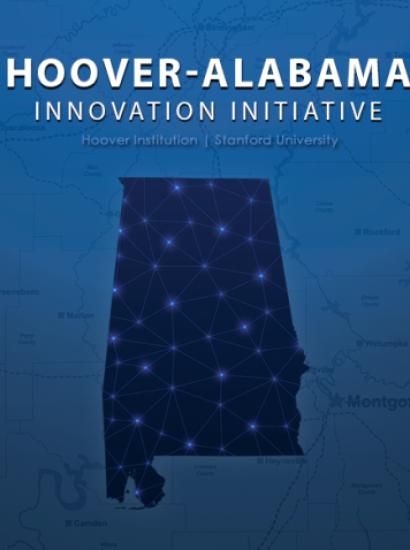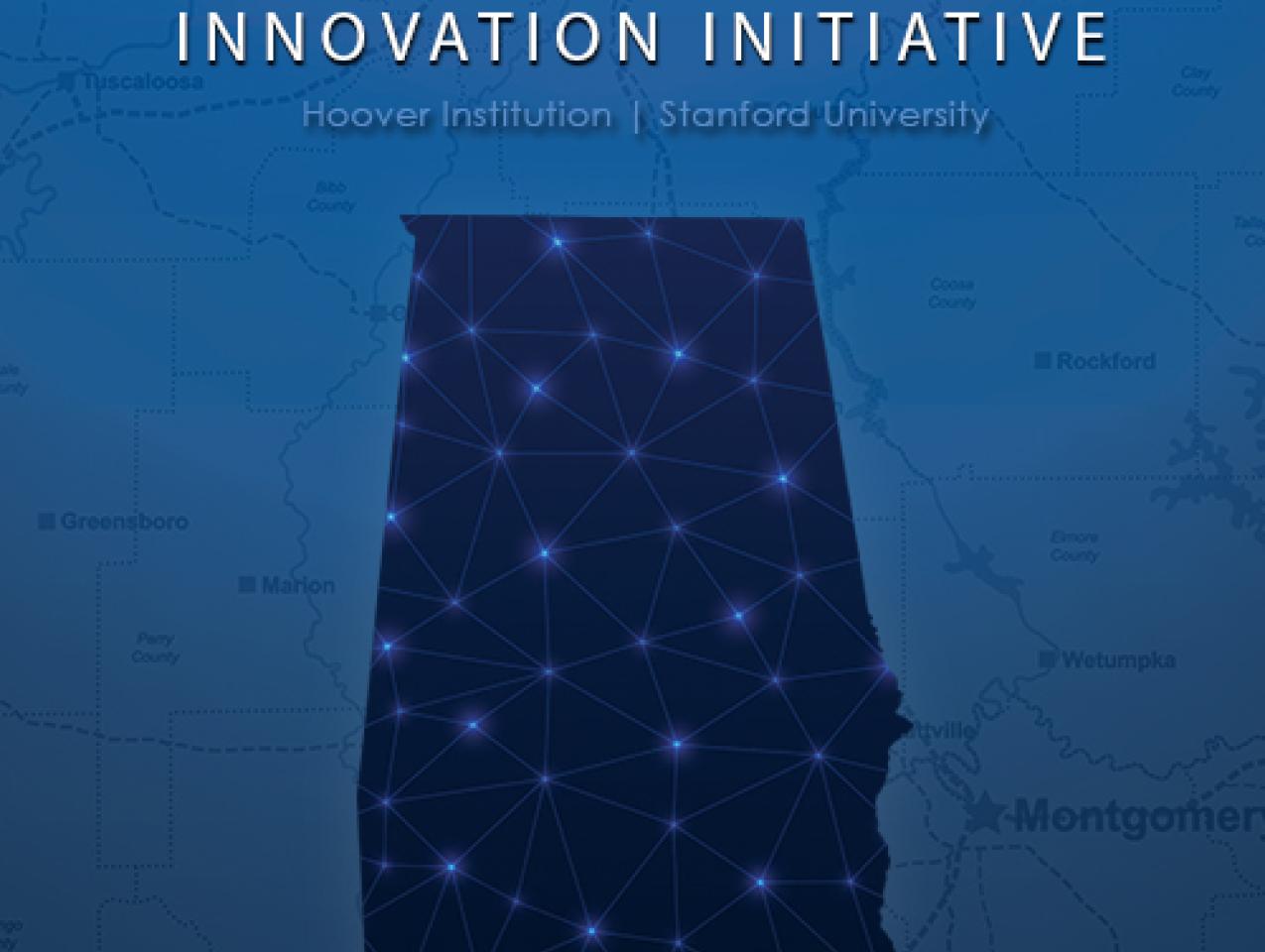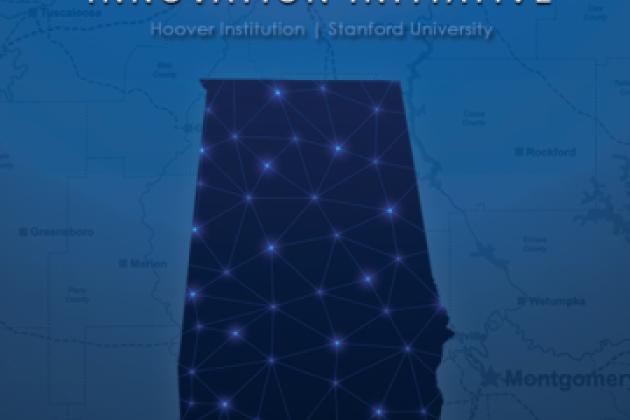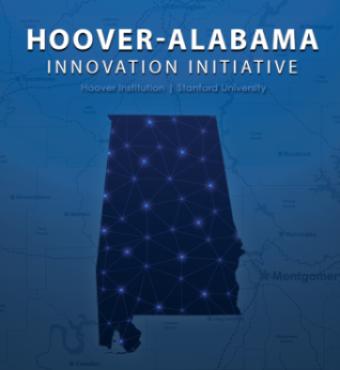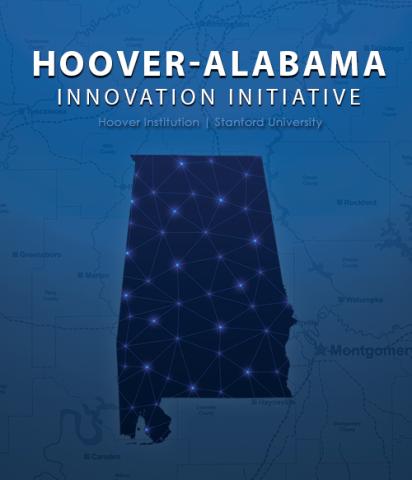By Jonathan Movroydis
In this interview, Senior Fellow Stephen Haber discusses the Hoover Institution’s partnership with the Alabama Innovation Commission (AIC) to develop solutions on how the state can best recruit companies, attract and retain highly skilled labor, finance start-ups, and establish hubs for scientific and technological innovation. Haber also describes what he believes the role of government should be in bringing about innovation, and details his particular work in researching the expansion of Alabama’s recreational sites, which he argues are a key factor in spurring economic development.
Will you tell us about the genesis of Hoover’s partnership with the Alabama Innovation Commission?
Kay Ivey, the governor of Alabama, created an innovation commission in summer 2020, of which Hoover director Condoleezza Rice is on the Advisory Council. Director Rice and I share a vision that many of the nation’s challenges should be solved at the state and local levels rather than through the federal government.
Director Rice asked me if I would get involved in advising the Alabama Innovation Commission, along with a group of Hoover fellows and Stanford faculty, including Rick Banks, Eric Hanushek, Macke Raymond, Josh Rauh, Alexander Galetovic, and Jonathan Rodden. Hoover then launched a policy lab to engage students in the research process. Led by Senior Fellow Josh Rauh, the policy lab was a collaboration between the Hoover Institution, the Stanford Graduate School of Business, and the Stanford Law School. Within teams in the policy lab, Stanford MBA students worked with undergraduate students from universities in Alabama to explore obstacles and solutions to expand innovation within Alabama. Drawing on some of the themes that were discussed in the policy lab, Hanushek, Raymond, Rauh, Galetovic, Rodden and I wrote chapters that assessed Alabama’s educational, legal, financial, governance, and physical infrastructure—all of which are necessary components to transform the state into a world-renowned hub for innovation. Our goal is to provide an independent report to the Alabama Innovation Commission that we hope will be useful to them as they consider recommendations they will make to the state government.
Why do you believe there is now an opportunity to significantly affect change at the state and local levels nationwide?
Politics in DC have become quite dysfunctional. Policy making can be easier at the state and local levels because the cross-cutting coalitions tend to be simpler, meaning that it is easier to affect meaningful change.
I think also that some of the wisdom we gained from the COVID-19 experience is that one-size-fits-all policies don’t work for a country as diverse as the United States. Public health responses implemented in New York certainly weren’t appropriate for Topeka, Kansas.
Another element that is emerging, and this is on the supply side rather than the demand side, is that we are starting to build at Hoover significant policy expertise in state and local government. This includes the research Macke Raymond, Rick Hanushek, and Caroline Hoxby have been conducting on various issues involving education. It also brings in other fellows’ talents and disciplines, such as Josh Rauh’s study of state pension funds and Jonathan Rodden’s insights on economic and political geography, as well as my work on innovation.
Is Alabama’s economy primarily powered by its agricultural sector?
That's actually one of the misconceptions about the Alabama economy. Back in the nineteenth century, Alabama was primarily agricultural. Textiles then moved into Alabama because the state was equipped with abundant waterpower. However, in the early twentieth century, Alabama became a major steel producer. Birmingham, for example, was a booming steel city. Like many American cities, Birmingham never recovered after its steel industry went into decline in the 1970s and 1980s.
More recently, Alabama became a major automobile manufacturer, not just for American companies but for Japanese and German producers as well. Looking at the Alabama economy in the last ten years, I think the single most striking development is its growth in automobile and automobile parts manufacturing.
What is the role of government in spurring innovation?
In my personal view, governments are not good at picking winning industries. The Obama administration’s experience with Solyndra is just the tip of the iceberg when it comes to the evidence of politicians picking winners and losers.
The role of government is to create the necessary infrastructure, broadly defined, that includes the rule of law, the tax system, property rights, education, outdoor recreation opportunities, and broadband—basically all of the building blocks that attract firms and high-skilled workers. Those firms and workers will then determine which industries emerge—and they will do it much more efficiently than government ever will.
My favorite example of this is Silicon Valley. Nobody designed the world’s leading technology hub. The state government in Sacramento didn't dictate in the 1950s: “Oh, we should have a plan where we’re going to transform a bunch of cherry and almond orchards into lots for buildings that will house the computer industry.” That's not how it happened.
Let’s start by clearly defining the concept of innovation. Innovation is the ability to see a demand curve for a product that doesn’t yet exist or for an improved version of a product that already exists. Making that a reality requires not just a vision but also the ability to combine the talents of engineers, inventors, lawyers, finance professionals, and people with expertise in marketing and product design into a team that yields more than the sum of its parts.
The quintessential example of this is the iPhone, probably the most successful consumer product in the history of the planet. There are now other smartphones, made by numerous firms around the planet, but the basic design and vision goes back to Apple in 2006. Apple did not develop most of the technology in the iPhone. It was bought from other firms. Apple didn’t make the Gorilla Glass, the iPhone surface that’s made by Corning. Apple didn't make the chip that powers the iPhone. That was made by Qualcomm. Apple didn’t own all the intellectual property that enables the iPhone’s various features, such as geolocation, music streaming, etc. That was developed by dozens of other firms. What it did was integrate all those technologies, and in doing so it created an entirely new product: a supercomputer in your pocket that is also a camera, an entertainment system, and a navigation system—that also happens to make a phone call. As a result, Apple earned what economists call Ricardian rents, the ability to generate more revenue per unit of input than its competitors.
Firms are much better positioned to make these types of innovative leaps than governments. But that does not mean that government has no role. Government, as the principal producer of educational, legal, financial, governance, and physical infrastructure, plays a crucial role in innovation. Without that infrastructure, people with specialized knowledge and skill sets, and people with investable savings, move elsewhere.
It was not an accident, for example, that Silicon Valley emerged in California. The technology boom of the Bay Area began when Nobel Prize–winning physicist William Shockley broke with his former employer, Bell Labs, and moved to Mountain View, California, to found Shockley Electronics. Shockley recruited a bunch of talented people to work for his firm—many of whom quickly found that they could not work with Shockley. Eight of them soon left and founded a rival, Fairchild Semiconductor, which in turn then spawned another sixty firms, which today are household names in the valley. Shockley’s decision to move to Mountain View was idiosyncratic (his mother lived there), but he could recruit other people to join him—and they in turn were able to recruit and retain yet others—because the natural environment interacts with good governance to create a hospitable climate for ambitious people with complementary skill sets. Though it is difficult to imagine it now, California in the 1950s was a low-tax state with good public schools, a sane regulatory environment, and a high standard of living. On top of that, the Bay Area boasted a beautiful natural environment and outdoor recreation opportunities within easy reach.
What have you discovered in your field research, and what recommendations do you plan to make to the Innovation commission?
I will talk about outdoor recreation because it’s an area in which I have focused. Alabama is actually among the most biodiverse states in the United States. Its southern shores border the Gulf of Mexico. The Black Belt region sits just above that, running east-west across the southern third of the state. It provides rich topsoil for agricultural production as well as dense forests, and wetland habitat for migratory birds. The northern part of the state sits on the Cumberland Plateau, which is a set of rolling hills that vary in elevation from roughly 600 to 1,200 feet. The entire state is crisscrossed by rivers and streams. In short, it is a paradise for hikers, backpackers, rock climbers, mountain bikers, canoers, and wildlife enthusiasts.
Alabama’s natural environment is immense and impressive, but the state hasn’t yet been fully developed for outdoor recreation. Government expenditures at the local, regional, and statewide levels are largely earmarked for other purposes. In our report to the AIC, we advise that the state ramp up spending on outdoor recreation infrastructure. Funding may come from combining private philanthropy, state funds, federal funds, and revenues from user fees. Because projects will generate externalities and incremental economic activity, over time they will also generate higher tax revenues for the state. To accomplish this goal, we are advising the creation of a Joint Commission for Outdoor Recreation Infrastructure, named by the governor, that includes broad representation across the public, private, higher education, and nonprofit sectors. The joint commission would have three primary goals. First, it would draw on Alabama’s State Comprehensive Outdoor Recreation Plan (to be released in 2022) to identify projects that would generate significant positive externalities for the state, and then estimate the scale of the necessary investment. Second, the joint commission would be a vehicle through which funding sources, beyond those already in place, would be identified and pursued. One such source might be the Infrastructure Investment and Jobs Act (H.R. 3684) that is winding its way through Washington. Third, the joint commission would work with state agencies, municipalities, nonprofit organizations, and the private sector to plan outdoor recreation infrastructure projects, select developers, distribute funds, and ensure delivery of projects and services.
Are there any specific partners that you’re working with on expanding recreational sites?
On the recreation side, we have been focusing on working with actors that are Alabama natives or have been residents of the state for some time. For example, in the Black Belt region of Alabama, outside the town of Greensboro, there is a small farm of two hundred acres called “the Joe Farm.” The current and third-generation owner of the farm, Christopher Joe, has converted part of his land to an outdoor recreation site offering Connecting with Birds and Nature tours.
We’ve also been connecting with state agencies and nonprofit organizations. For example, the Alabama Department of Natural Resources and Conservation administers a far-sighted program called Forever Wild. The program purchases land in Alabama to provide for greater habitat conservation and public recreational opportunities. It is entirely paid for through revenues earned by the state from oil and gas exploration in the Gulf of Mexico. We have also learned from nonprofits, such as the Freshwater Land Trust, which is dedicated to expanding publicly accessible trails in and around Birmingham. The Freshwater Land Trust recently partnered with a local Rotary Club to purchase property in a section of Birmingham that had largely been abandoned. They successfully built a beautiful and functional trail, spurring the development of restaurants, bars, cafés, and condos around it. So, with a relatively modest investment, a coalition of private actors increased the economic prosperity of a neglected area.
Are there lessons that you learned from this experience that can be applied to other state and local governments across the country?
The primary lesson that I learned is the need to listen. I think it is very important to get to know people in a state or locality who are already trying to do good. Ultimately, an outsider doesn’t know a state’s history, natural environment, and its political and economic circumstances as well as someone who has lived there for a long time. The first rule of public policy is to do no harm. If you don’t listen to state and local actors, you may do harm.
The second takeaway is that more government is not necessarily the answer to every problem. For many Californians, the answer to every problem—including “where did I leave my glasses”—is more government. There is plenty of evidence that the government is not good at fixing every problem. What government is good at is creating what economists call “public goods,” things that are going to be shared by everybody.
The third lesson that I learned was that the creation of public goods isn’t solely the domain of the government. The private sector, for example, can be a source of substantial capital for projects that have public benefit. It can also prevent contentious political wrangling and enable the efficient planning and completion of projects in which the citizens ultimately benefit.







